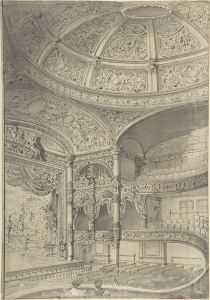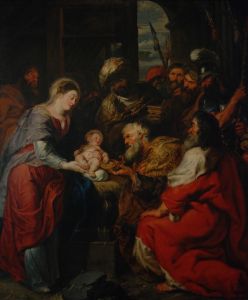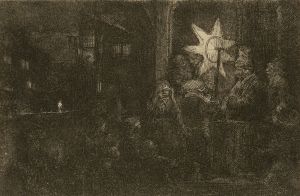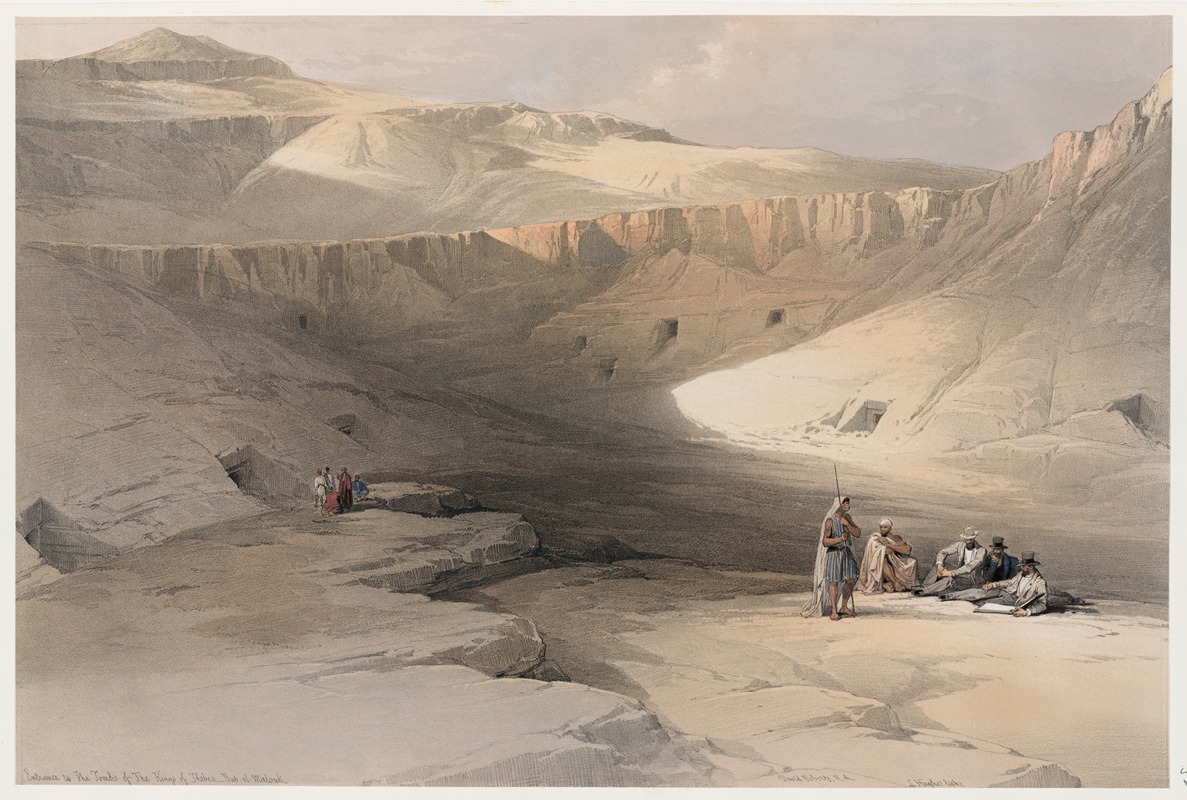
Entrance to the tombs of the kings of Thebes. Bab-el-Malouk [Bîbân al-Mulûk].
A hand-painted replica of David Roberts’s masterpiece Entrance to the tombs of the kings of Thebes. Bab-el-Malouk [Bîbân al-Mulûk]., meticulously crafted by professional artists to capture the true essence of the original. Each piece is created with museum-quality canvas and rare mineral pigments, carefully painted by experienced artists with delicate brushstrokes and rich, layered colors to perfectly recreate the texture of the original artwork. Unlike machine-printed reproductions, this hand-painted version brings the painting to life, infused with the artist’s emotions and skill in every stroke. Whether for personal collection or home decoration, it instantly elevates the artistic atmosphere of any space.
David Roberts' painting "Entrance to the Tombs of the Kings of Thebes. Bab-el-Malouk [Bîbân al-Mulûk]" is a significant work that captures the grandeur and historical importance of the Theban necropolis in Egypt. Created during the 19th century, this artwork is part of Roberts' extensive collection of lithographs and paintings that document his travels through the Middle East and North Africa. Roberts, a Scottish painter, is renowned for his detailed and accurate depictions of architectural and historical sites, which were highly valued during a time when photography was not yet widespread.
The painting depicts the entrance to the Valley of the Kings, known in Arabic as "Bîbân al-Mulûk," which translates to "Gates of the Kings." This valley is located on the west bank of the Nile, opposite the city of Luxor, and served as the burial site for pharaohs and powerful nobles of the New Kingdom of Egypt. The Valley of the Kings is one of the most famous archaeological sites in the world, containing over 60 tombs, including that of the young pharaoh Tutankhamun.
Roberts visited Egypt in the late 1830s, a period when European interest in ancient Egyptian culture and archaeology was burgeoning. His journey was part of a larger expedition that took him through the Holy Land and other parts of the Middle East. During his travels, Roberts made numerous sketches and notes, which he later used to create a series of lithographs upon his return to Britain. These works were published between 1842 and 1849 in a collection titled "The Holy Land, Syria, Idumea, Arabia, Egypt, and Nubia."
The painting itself is characterized by Roberts' meticulous attention to detail and his ability to convey the scale and majesty of the ancient structures. In "Entrance to the Tombs of the Kings of Thebes," Roberts captures the rugged landscape surrounding the tombs, with the entrance framed by towering cliffs. The composition likely includes figures to provide a sense of scale, emphasizing the monumental nature of the site.
Roberts' work played a crucial role in shaping Western perceptions of the Middle East and its ancient cultures. His paintings and lithographs were among the first to provide a visual record of these regions to a European audience, contributing to the growing field of Egyptology and the broader Romantic fascination with the exotic and the ancient.
The accuracy and detail of Roberts' depictions were highly praised, and his works remain valuable both as artistic achievements and historical documents. Today, his paintings are held in various collections, including museums and galleries, where they continue to be appreciated for their historical significance and artistic merit.





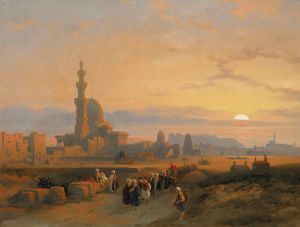
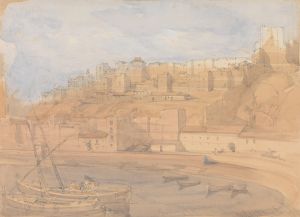
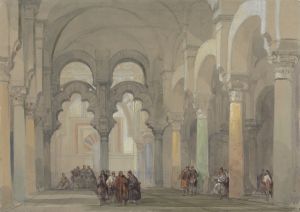
![Dendera [Dandara]. Dec. 1838.](/imgs/217474/s/david-roberts-dendera-dandara-dec-1838-6eb01a73.jpg)
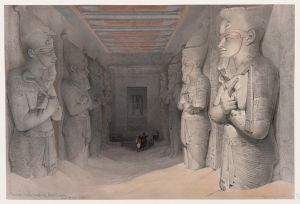
![Pyramids of Geezeh [Giza].](/imgs/217529/s/david-roberts-pyramids-of-geezeh-giza-edcbd9cd.jpg)
![Temple of Edfou [Idfû], ancient Appolinopolis, Upper Egypt.](/imgs/217546/s/david-roberts-temple-of-edfou-idfu-ancient-appolinopolis-upper-egypt-2a77d2d6.jpg)

![Tombs of the Memlooks [Mamelukes], Cairo.](/imgs/217568/s/david-roberts-tombs-of-the-memlooks-mamelukes-cairo-74c4b2cc.jpg)
![Group of Nubians, Wady Kardasey [sic] [Qirtâsî].](/imgs/217579/s/david-roberts-group-of-nubians-wady-kardasey-sic-qirtasi-c64109d2.jpg)
